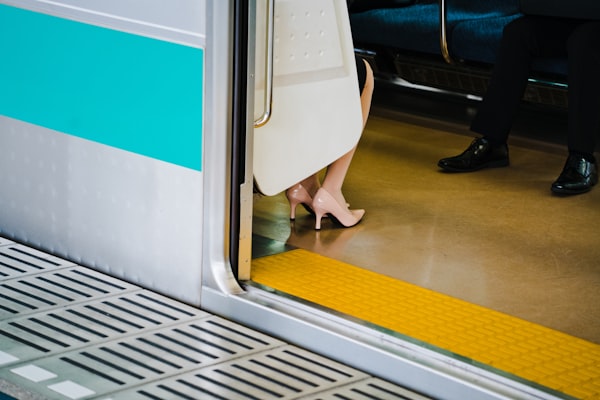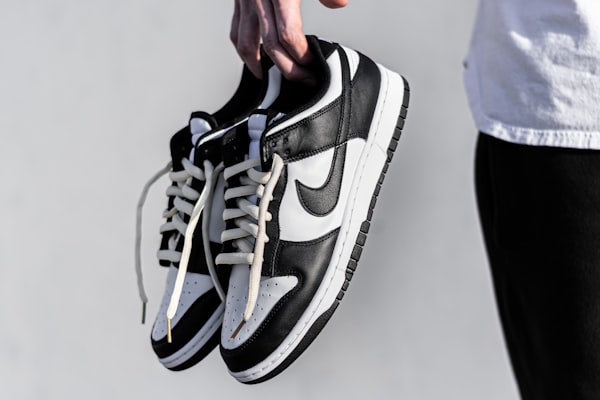Attention all flat-footed friends! Have you ever wondered why your feet feel like they're made for stomping instead of striding? If you've got low arches, you're not alone in your flat-footed journey. Welcome to the club where arch support is the VIP pass!
Imagine stepping out every day, feeling like your feet are just concrete slabs. That's the daily grind for those of us with flat feet. But fret not! We're diving deep into the world of flat feet to give you the lowdown on why your feet might feel less like springboards and more like pancakes.
You deserve to walk, run, and dance with the kind of comfort that only comes from understanding your unique foot structure. Whether pacing through city streets or sprinting in a marathon, knowing the ins and outs of your flat feet can transform your experience from painful to pleasurable.
Dive into our detailed guide on low arches. We'll equip you with all the need-to-know facts, debunk common myths, and introduce you to footwear solutions that promise to elevate your every step. Say goodbye to discomfort and hello to a new era of foot-friendly adventures. Your journey to becoming a flat-footed phenom starts here!
Understanding Flat Feet
Flat feet, medically known as pes planus, describe a condition where the arches of the feet are lowered or completely absent. When standing, the entire sole of the foot comes into close contact with the ground, which is not the case for individuals with normal arches. Although flat feet are often a congenital condition, they can also develop over time due to various factors, including wear and tear, injury, or weakening of the tendons that support the arch.
There are two main types of flat feet:
- Flexible Flatfoot: This is the most common type and is characterized by an arch that appears when the foot is lifted off the ground but flattens when standing. It is usually painless and seen in both children and adults. In children, flexible flatfoot often becomes less pronounced as they grow.
- Rigid Flatfoot: Less common and more concerning, rigid flatfoot is characterized by a persistent absence of the arch, even when not bearing weight. This condition is generally painful and may indicate a more serious underlying condition, such as a bone problem or a tight Achilles tendon.
Causes of Flat Feet
Flat feet can result from various factors, including genetic predispositions, environmental influences, and specific medical conditions:
- Genetic Predispositions: The tendency to have flat feet can run in families. If one or both parents have flat feet, there's a higher chance their children will also develop the condition due to inherited structural characteristics of the foot.
- Footwear: Wearing non-supportive footwear, especially during childhood development stages, can contribute to the development of flat feet. High heels and shoes without adequate arch support may exacerbate the condition.
- Activity Levels: Excessive weight-bearing activities can strain the arches and lead to their eventual collapse. Conversely, insufficient physical activity can weaken the foot muscles, reducing their ability to support the arches.
- Obesity: Excessive body weight can increase the pressure on the arches, leading to their flattening over time.
- Diabetes: This condition can cause changes in the shape of the feet and weakening of the muscles that support the arches due to nerve damage.
- Rheumatoid Arthritis: An inflammatory condition that can cause the joints in the foot to deteriorate, which may contribute to the arch's collapse.
- Injuries and Trauma: Severe injuries, such as fractures or dislocations around the foot, can damage the tendons and bones that support the arch, leading to flat feet.
Signs and Symptoms of Flat Feet
Understanding the signs and symptoms of flat feet can help individuals recognize potential issues and seek appropriate care.
- Pain and Discomfort: The most common symptom is pain in the arch, heel, or ankle areas, which may increase with activity. This pain can sometimes extend to the legs, knees, hips, or lower back due to alignment issues.
- Swelling: Swelling along the inside of the ankle can also occur, particularly after extended periods of standing or walking.
- Foot Fatigue: Individuals with flat feet may notice their feet tire out more quickly than usual, especially after prolonged physical activity.
- Altered Gait: Overpronation is typical with flat feet, where the foot rolls inward excessively when walking. This can lead to an uneven weight distribution, affecting how shoes wear down and potentially causing discomfort in other areas of the body.
- Difficulty with Footwear: Regular shoes may not fit comfortably or provide adequate support for someone with flat feet, leading to a need for specialized footwear or custom orthotics.
Early diagnosis can prevent the progression of symptoms and the development of secondary issues, such as joint pain and back problems. If you notice any of the above symptoms or have ongoing discomfort in your feet, consulting with a specialist is advisable to obtain a proper diagnosis and appropriate treatment plan.
Diagnosis of Flat Feet
The diagnosis of flat feet is often straightforward and can be accomplished through a combination of patient history, physical exams, and imaging studies.
- Physical Examination: A podiatrist or orthopedic specialist typically begins with a physical examination. This involves observing the feet from the front and back while the patient is standing and sitting. The "too many toes" sign, visible extra toes on the outside of the foot due to overpronation, can indicate flat feet. They might also perform the "wet footprint" test, where the patient places a wet foot on a surface to visualize the footprint. A complete print of the foot indicates a low arch or flat foot.
- Gait Analysis: Observing how a patient walks can help assess how the feet bear the body's weight and highlight issues like overpronation or altered strides due to discomfort or structural abnormalities.
- Imaging Tests: X-rays are commonly used to determine the severity of the flat foot condition and to examine the bones for alignment and signs of injury or arthritis. More detailed images from CT scans or MRIs may be needed if there is suspected damage to the tissues, muscles, or tendons that support the foot.
- Flexibility Tests: Checking the foot's flexibility is crucial to distinguish between a flexible flat foot, where the arch appears when the foot is lifted off the ground, and a rigid flat foot, which remains flat. This distinction helps guide treatment options.
Living with Flat Feet- Lifestyle Changes and Treatment Options
Individuals with flat feet face daily challenges such as foot fatigue, pain after long periods of standing or walking, and difficulty finding comfortable shoes. Managing flat feet effectively involves a combination of daily care, proper footwear, exercise, and, when necessary, medical interventions. This multifaceted approach can help reduce discomfort, prevent injuries, and improve foot function.
Tips for Managing Discomfort and Preventing Injuries
- Regular Rest and Ice: Those with flat feet should take breaks during long periods of standing or walking to rest their feet. Applying ice can help reduce swelling and alleviate pain.
- Orthotic Inserts: Custom orthotic devices prescribed by a podiatrist can provide the necessary arch support, redistribute pressure, and correct abnormal walking patterns. Over-the-counter arch supports can also be beneficial for those with mild symptoms.
- Weight Management: Maintaining a healthy weight can reduce the stress on the arches of the feet, decreasing the risk of pain and structural changes.
Recommended Exercises that Help Strengthen the Feet
- Arch Lifts: Try to lift the arches of the feet while keeping the toes and heels on the ground. Hold for a few seconds, release, and repeat. This exercise helps strengthen the intrinsic muscles that support the arch.
- Toe Curls and Toe Splay: Curl the toes tightly, then spread them out as wide as possible. This enhances toe control and fortifies the muscles at the bottom of the feet.
- Heel Raises: Stand on the edge of a step with the heels hanging off. Slowly lift the heels, then lower them below the level of the step. This strengthens the calf muscles, which support the arches.
Role of Physical Therapy in Improving Foot Mechanics
Physical therapy is crucial in managing flat feet, especially for those experiencing significant pain or mobility issues. A physical therapist can develop a customized exercise program that targets the specific needs of someone with flat feet, focusing on strengthening foot and ankle muscles, enhancing balance, and improving gait. They can also use manual therapy, taping, and bracing techniques to support the feet and reduce symptoms.
Suitable Types of Footwear and Modifications
- Supportive Shoes: Footwear should have a firm heel counter, adequate cushioning, and support for the arches. Avoid high heels and shoes with flat insoles.
- Wide Toe Box: Shoes with a wide toe box can prevent additional pressure on the toes and front of the foot, which is essential for those with flat feet to avoid complications like bunions or hammertoes.
- Modifications: In some cases, shoe modifications, like heel lifts or rocker bottoms, can help manage specific symptoms associated with flat feet.
Common Myths and Misconceptions
The common perception of flat feet tends to lean towards a negative view, painting them as a defect or a source of endless complications. Many believe that having flat feet predisposes one to pain, discomfort, and a lifetime of limited physical activity. However, the reality is much more nuanced. While some individuals with flat feet may experience these issues, others lead completely normal lives without symptoms. In fact, flat feet in themselves are not a problem unless they cause pain or lead to other complications.
Myth 1: Flat Feet Are Always a Disability
A prevalent myth is that having flat feet is inherently disabling and that all individuals with this condition suffer from severe limitations and chronic pain. However, this is not universally true. Many people with flat feet experience no symptoms and can participate in daily activities without discomfort or limitations. Flat feet only become a concern if they cause pain or lead to other complications like alignment issues with the legs or lower back pain. For most, it's a structural variation with little to no impact on their overall quality of life.
Myth 2: Flat Feet Can't Be Corrected
Another common misconception is that flat feet are permanent and untreatable. While it's true that the structural aspect of flat feet is often permanent, especially if congenital, numerous treatments and interventions can effectively manage symptoms and improve quality of life. Orthotic devices are custom-made inserts that fit into shoes to support the arches and distribute pressure more evenly across the foot. Physical therapy can also be beneficial, as specific exercises can strengthen the muscles around the foot and ankle, thereby improving foot mechanics and alleviating discomfort. Surgical interventions may be considered for severe cases to reconstruct the foot's arch.
Myth 3: Flat Feet Limit Physical Activities
Many believe that flat feet preclude individuals from engaging in sports or pursuing athletic careers. However, this is far from the truth. Numerous athletes with flat feet have excelled in high-intensity sports. For instance, Usain Bolt, renowned as one of the fastest sprinters in history, has flat feet. This condition did not hinder his athletic performance; he adapted his training and used specialized footwear to manage his biomechanics effectively. This illustrates that with the proper support and management strategies, individuals with flat feet can achieve high levels of physical activity and success in sports.
By dispelling these myths, we can foster a more accurate understanding of flat feet, highlighting that while it is a notable anatomical characteristic, it is neither an insurmountable disability nor a barrier to an active, fulfilling life.
On a Final Note
Today, we've explored the anatomical characteristics, common misconceptions, signs and symptoms, and effective treatment options for managing flat feet.
It's important to view flat feet as a variation of human anatomy rather than a limitation. With the right knowledge and resources, those affected can manage symptoms effectively and lead active, fulfilling lives.
Embracing and accommodating your foot structure with suitable footwear, customized exercises, and possibly physical therapy can improve comfort and function significantly.
Remember, flat feet do not define what you can or cannot do. Embrace your feet as they are, and take strides towards maintaining their health and your overall well-being.
Related Articles










